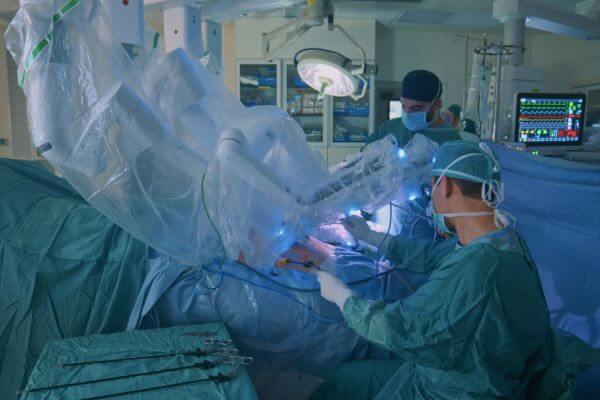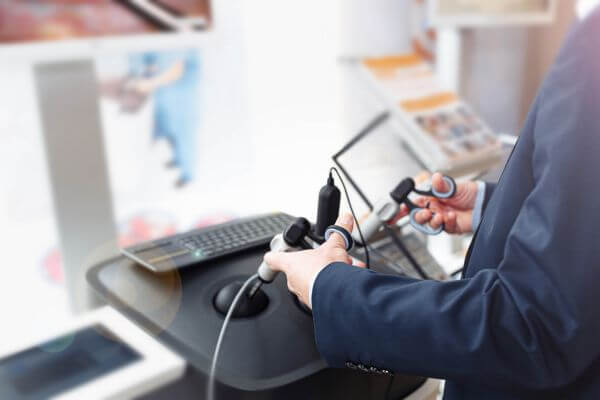There’s a new face in the medical world, and it’s not human—it’s robotic. Robotics in Medicine represents the fusion of medical science with robotics technology, a fascinating paradigm shift, allowing unprecedented precision, efficiency, and accessibility in healthcare.
But how did we get here? And what does it mean for patients, healthcare providers, and the broader landscape of medicine? Robotics in healthcare isn’t about replacing human touch but rather enhancing it.
From robot-assisted surgeries to round-the-clock care, let’s unravel the intricacies of this technological marvel, delving into what it offers and the promises it holds.
Robot-Assisted Surgeries: Precision Meets Innovation
Imagine the unerring accuracy of a machine coupled with the nuanced understanding of a skilled surgeon. This is the reality in many operating rooms today, where robotic arms assist in complex procedures, allowing for unparalleled precision.
Such enhancements not only reduce errors but also minimize invasion, leading to quicker recovery times. The synergistic blend of human intelligence and robotic efficiency is transforming surgeries, making them safer and more predictable.
However, it’s crucial to recognize that these robots don’t operate independently. Behind every mechanical maneuver is a skilled medical professional guiding the process, ensuring that technology enhances, not replaces, human expertise.
Telemedicine Robots: Healthcare Beyond Boundaries
Imagine living in a remote area and having access to world-class medical advice right from your living room. Telemedicine robots make this possible, bridging gaps and eliminating geographical barriers.
These intelligent machines can connect patients with specialists thousands of miles away, offering real-time consultations and examinations. It’s not only convenient but life-saving, especially in critical care situations where time is of the essence.
Moreover, the continuous evolution of telecommunication technologies ensures that this trend is more than a fleeting gimmick; it’s a sustainable, scalable model for inclusive healthcare.

Robotic Nursing Assistants: Round-the-Clock Care
The introduction of robotic nursing assistants is a testament to the adaptability of robotics in healthcare. These robots, guided by trained nursing staff, can perform routine tasks like medication administration and patient monitoring.
This not only alleviates the workload on human nurses but also ensures uninterrupted patient care. Consistency, accuracy, and tirelessness are attributes where these robotic assistants shine.
Nevertheless, empathy, compassion, and human interaction are irreplaceable, making these robots supportive tools rather than replacements for human caregivers.
Robotics in Medical Research: Accelerating Discoveries
Beyond patient care, robotics finds a significant place in medical research. Automated systems in laboratories can carry out complex tasks, such as DNA sequencing and compound analysis, at breathtaking speeds.
These technologies foster a faster, more accurate, and efficient research process. Consequently, the journey from a laboratory breakthrough to a viable treatment is expedited, paving the way for quicker medical advancements.
Still, the integration of robotics in research doesn’t diminish the role of human scientists. It merely amplifies their capabilities, allowing more focus on innovative thought and exploration.

Ethical Considerations and Challenges: Navigating the Complexities
With great innovation comes great responsibility. The integration of robotics in healthcare brings forth ethical questions, such as data security, accountability, and potential job displacement.
Creating robust guidelines, ethical protocols, and transparent policies is paramount to harness the benefits of this technology responsibly. The collaboration between regulators, healthcare providers, and technology experts is essential to ensure an ethical framework.
Though challenges persist, the willingness to address them proactively can ensure that robotics in healthcare serves as a boon rather than a dilemma.
Conclusion
The convergence of robotics and medicine paints a future replete with possibilities, transforming the way we perceive and receive healthcare. While the technological marvels are awe-inspiring, the human element remains central to this evolution. Robots in medicine are not about cold, emotionless machines but about augmenting human ability, reaching new horizons, and making healthcare more accessible, efficient, and humane. The journey has just begun, and the path ahead is filled with promise and intrigue.



